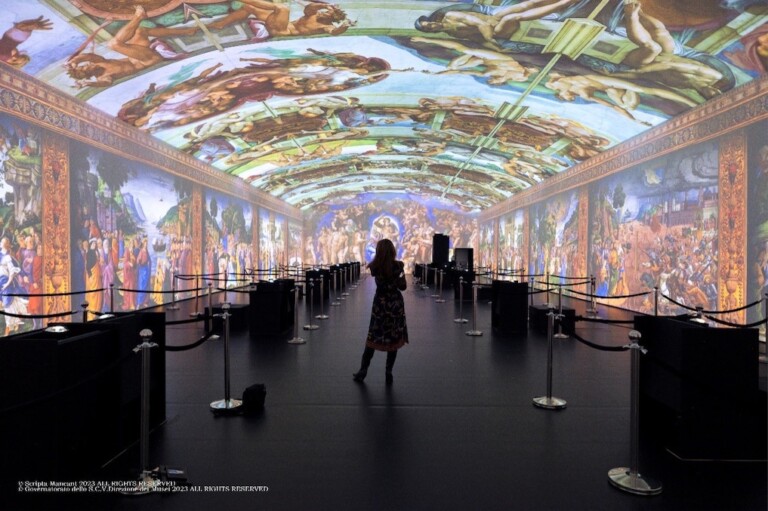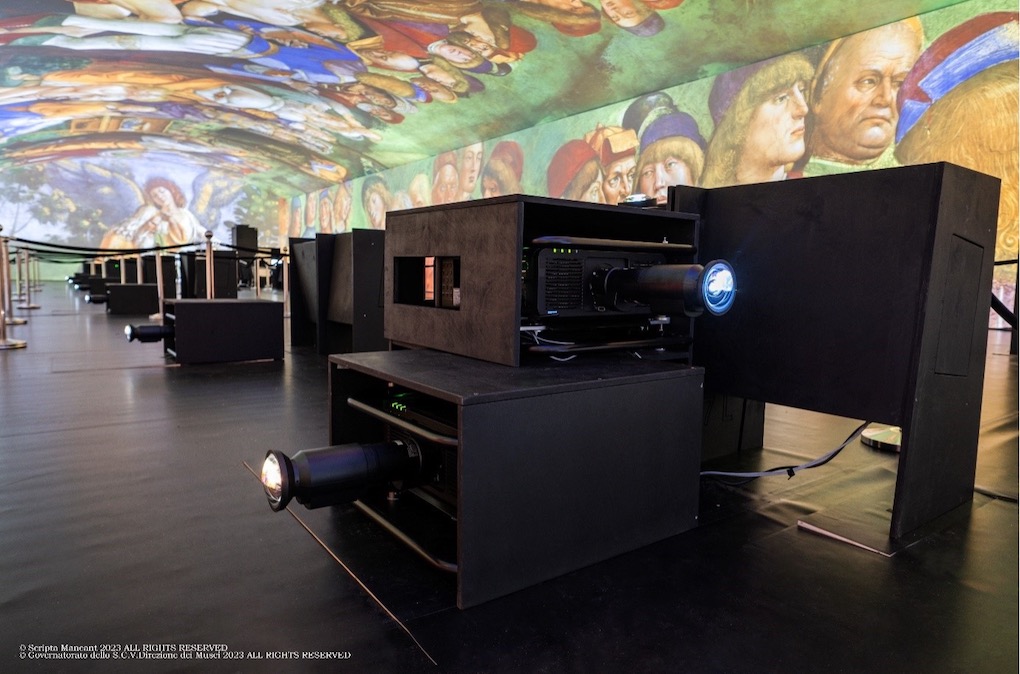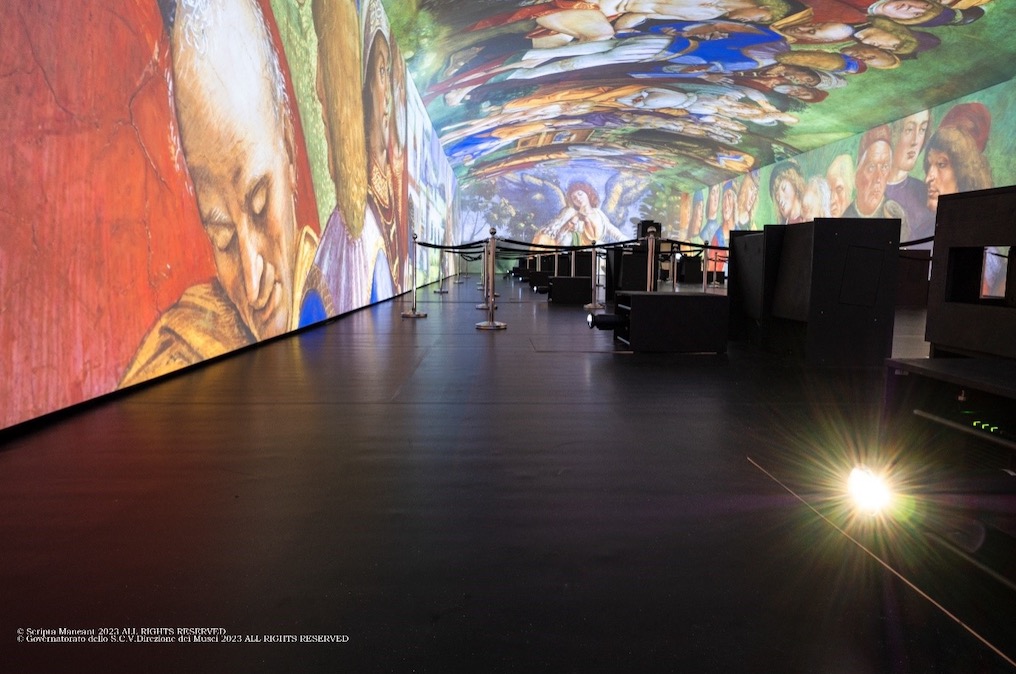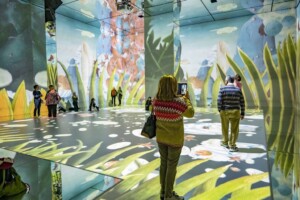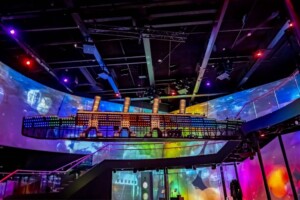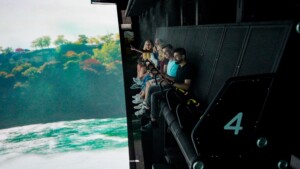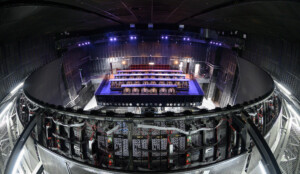by Thomas Vertommen, Panasonic Connect Europe
Imagine standing beneath the expansive skies of Michelangelo’s Sistine Chapel, enveloped by the divine drama and intricate details of one of the world’s most treasured artistic achievements. Now, picture this experience not in the Vatican but in your local community centre, museum, or as part of a touring exhibition.
Thanks to a collaboration between the Vatican Museums, Emission House Manuscriptum in Poland, LIVE Agency, Scripta Maneant in Italy, and ARAM company, the Sistine Chapel was brought to Poland in an engaging multimedia exhibition using Panasonic projectors and innovative new technology.
One of the major inhibitors that has prevented these high-level, immersive experiences from going on tour has recently been solved. In immersive entertainment, the quest for mobile and affordable solutions is driving ground-breaking changes in how companies create and deploy experiences.
A notable shift towards distributed architecture promises to revolutionise the delivery of immersive experiences to audiences globally. This offers a glimpse into a future where the beauty of the Sistine Chapel can be shared far and wide.
Distributed architecture is a significant shift
Traditionally, centralised architecture has constrained immersive installations. Here, a single, often bulky hub forms the core of the operation. This model, while effective under certain conditions, presents significant challenges for experiences intended to travel. High-resolution synchronised content and complicated signal transportation make the infrastructure costly.
The logistics involved in moving, assembling, and disassembling these centralised systems further add to their cost and complexity. This restricts the flexibility and scalability of immersive deployments.
The advent of distributed architecture heralds a new era. It decentralises processing power across multiple nodes directly within the projectors or displays. Embedding processing capabilities within the display units themselves dramatically reduces the need for extensive central processing equipment and complex wiring.
ARAM and HIVE combine
The new distributed architecture for immersive experiences revolutionises traditional set-ups by decentralising the processing elements. Using the Intel SDM slot in Panasonic projectors, HIVE has created a compact media server solution on a board. Called the BeeBlade, this integrates directly into the Panasonic display device. Locating the media processing engine in the display device significantly reduces the need for extensive cabling and centralised control systems.
The result is a more streamlined, cost-effective, and energy-efficient setup. This system also offers greater flexibility, allowing for easier transportation and quicker assembly, essential for touring immersive experiences. This new model represents a significant shift towards more sustainable and adaptable media server solutions in digital storytelling and immersive experiences.
Bringing the art of the Sistine Chapel to life for visitors unable to visit Rome
Until recently, people could only experience Michelangelo’s famous work in the Sistine Chapel in person when visiting Rome. However, this incredible visual spectacle has now been recreated in an immersive experience using a distributed architecture approach with HIVE’s BeeBlade media server on a board in Panasonic Intel SDM-enabled projectors.
Polish AV integrator ARAM headed up the complex installation. It opted for 39 HIVE BeeBlades inside Panasonic Intel SDM compatible projectors and three BeeBoxes that powered LED walls.
Unleashing creativity with distributed architecture
In conclusion, the move towards distributed architecture in immersive entertainment marks a significant step towards making awe-inspiring immersive experiences more accessible and sustainable. As technology continues to advance, we anticipate a future where the limitations of immersive entertainment are not logistical. Instead, they will be defined by the limitless possibilities of creativity, innovation, and storytelling.
“We are impressed with how the entire installation works with the decentralized BeeBlade system and how it helps to build multi-projector installations,” says Rafal Mrzyglocki, CEO of ARAM. “This evolutionary change makes whole immersive spaces easier to install and operate.”
Find out more
Click here to discover more about the projection technology behind some of the greatest immersive experiences in the world and what might be best for your location.
